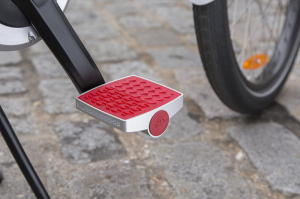Still not ready to tackle an analysis of the November Harvard Business Review cover story, by PTC CEO Jim Heppelmann and Professor Michael Porter, on How Smart, Connected Products Are Transforming Competition, but I did want to do a shout-out to a companion piece, Digital Ubiquity: How Connections, Sensors, and Data Are Revolutionizing Business, by two HBS profs, Marco Iansiti and Karim R. Lakhani.
In particular, I wanted to suggest that you use the last section of the paper, “Approaching Digital Ubiquity,” as a checklist of priorities to create your own IoT strategy (I’d be remiss if I didn’t also mention my “Managing the Internet of Things Revolution” i-guide and this blog’s “Essential Truths” as references as well..).
Here are their points, and my reflections on them:
- Apply the digital lens to existing products and services.
This is a profound transformation, because we’ve become so accustomed to working around the gaps in our knowledge that were the reality in an analog world.As Iasanti and Lakhani say, you now need to ask:
“What cumbersome processes in your business or industry are amenable to instrumentation and connectivity?
Which ones are most challenging to you or your customers?” - Connect your existing assets across companies.
We “get” competition, but collaboration, especially with competitors, is a little less instinctive.“If you work in a traditional analog setting, examine your assets for new opportunities and look at other industries and the start-up world for new synergies. Your customer connections are especially valuable, as are your knowledge of customers’ needs and the capabilities you built to meet knowledge of customers’ needs and the capabilities you built to meet them. Nest is connecting with public utilities to share data and optimize overall energy usage. If you work in a start-up, don’t just focus on driving the obsolescence of established companies. Look at how you can connect with and enhance their value and extract some of it for yourself.knowledge of customers’ needs and the capabilities you built to meet them. Nest is connecting with public utilities to share data and optimize overall energy usage. [my note: this is a great example of thinking expansively: even though your product is installed in individual homes, if data can be aggregated from many homes, it can be of real value on a macro scale as well. The smart grid is a great example of bringing all components of energy production, distribution, and use together into an integrated system.] If you work in a start-up, don’t just focus on driving the obsolescence of established companies. Look at how you can connect with and enhance their value and extract some of it for yourself.”
- Examine new modes of value creation.
Just because you make tangible products doesn’t mean that you’re limited to just selling those products to make money in the future. You’ll be able to make money by selling customers actionable data that will allow them to improve productivity and reduce maintenance. Perhaps you’ll stop selling altogether, and make money instead by making your products the cornerstone of profitable services.Begin to ask:
“What new data could you accumulate, and where could you derive value from new analytics?”
“How could the data you generate enable old and new customers to add value?” - Consider new value-capture modes.
“Could you do a better job of tracking the actual value your business creates for others?”
“Could you do a better job of monetizing that value, through either value-based pricing or outcomes-based models?” -
Use software to extend the boundaries of what you do.
You will still make products, as in the past, and that gives you a tangible basis for the future. But you’ll need a digital component as well.“Digital transformation does not mean that your company will only sell software, but it will shift the capability base so that expertise in software development becomes increasingly important. And it won’t render all traditional skills obsolete. Your existing capabilities and customer relationships are the foundations for new opportunities. Invest in software-related skills that complement what you have, but make sure you retain those critical foundations. Don’t jettison your mechanical engineering wizards—couple them with some bright software developers so that you can do a better job of creating and extracting value.”
What do you think? Any more questions you’d add? Let me know!






